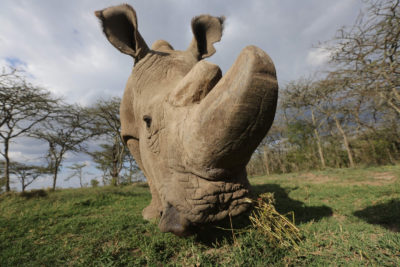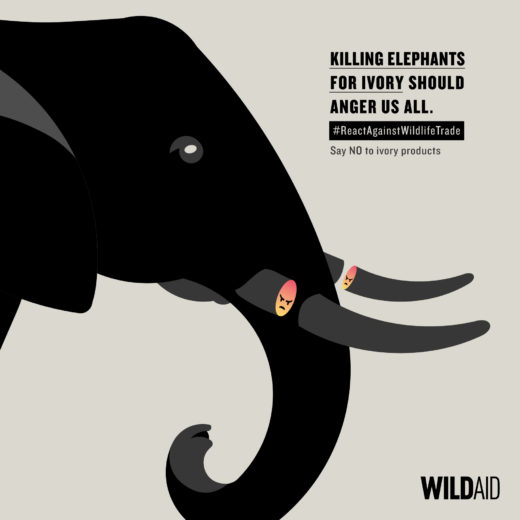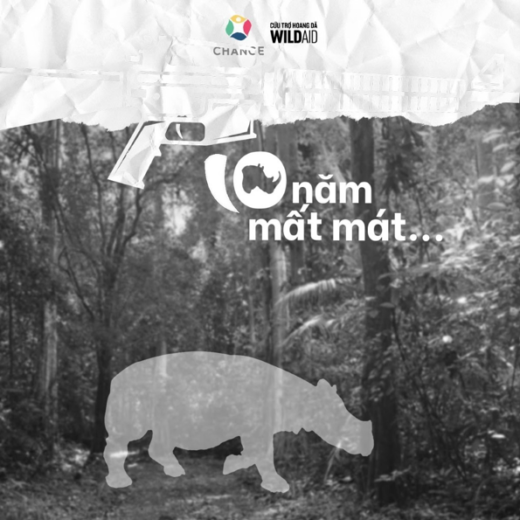


However, according to authorities in South Africa rhino poaching has dropped dramatically under COVID-19.
Rhino poaching there was down by nearly 50% during the first six months of 2020, with only 166 rhinos killed, compared with 316 in the same period of 2019.
WildAid had been expecting poaching to drop more since the price of rhino horn in Asia fell by two thirds from $66,000 per kilo to $22,000 or less (in 2017). This decrease is in part due to successful public awareness campaigns in China and Vietnam and a powerful new penal code in Vietnam. Normally we would expect a price drop like this to result in a swift reduction in poaching; however, this decline has been gradual until now.
Peter Knights, CEO at WildAid says “If these figures are correct and the progress can be maintained as the economy re-opens we should see increasing rhino populations for the first time in a decade.”
What is behind this decline in rhino poaching?
Barbara Creecy, South Africa’s Minister of Environment, Forestry and Fisheries, believes the decline is due to “the nationwide COVID-19 lockdown and disruption to international smuggling rings and a decade of implementing various strategies and campaigning against ever-increasing rhino poaching by local poachers recruited and managed by crime syndicates.”
But Creecy warns that since lockdown restrictions have been gradually lifted and game parks reopened, so too has rhino poaching slowly increased.
“In the three months from when a lockdown was implemented on March 27 until the end of June, 46 rhinos were killed across the country,” Creecy adds.
In April this year, Kruger National Park reported zero rhino killings in their Intensive Protection Zone for the first time in nearly 10 years. In Kruger National Park there were a total of 504 rhino killings in 2017, 421 in 2018 and 327 in 2019.
The decline in poaching in Kruger has also been attributed to the Skukuza wildlife court that was set up specifically to prosecute rhino poachers and middlemen in 2017. As a result, rhino poaching moved to other parks. Conservationists were shocked when the court was abruptly closed last year with no clear justification
So, can South Africa sustain the lower rhino poaching numbers?
Investigative Reporter Julian Rademeyer believes that the economic impact of the pandemic in South Africa could ultimately lead to an uptick in poaching, “the bottom has fallen out for game farming and tourism industries, many game reserves are now on the brink of collapse. The economy is suffering and conservation will be the last priority for funding and law enforcement.”
But there are reasons for hope. Julian has seen improvements in international collaboration between law enforcement units, “no longer is it the case that a customs officer in China [just] stumbles across a shipment of rhino horn, now tip-offs are received from counterparts in Africa and that information is acted upon.”
“A good example of this type of collaboration is between the U.S. Government Fish and Wildlife Services and the Drug Enforcement Administration in Uganda who together took down the Chromo syndicate’s ivory and rhino poaching operation,” Rademeyer adds.
Rademeyer stresses that to end poaching, “more international investigations are needed to bring down criminal syndicates higher up the supply chain. Trying to battle poaching in the bush is a holding game, it doesn’t matter how many poachers you stop, poachers come from deeply impoverished communities who are vulnerable to exploitation by criminal networks.”
At WildAid, we believe, when the buying stops, the killing can too. This is why it is critical to continue reducing consumer demand for rhino horn while strengthening enforcement against the trade.
“Closing the specialized Skukuza Court is a backwards move and we remain concerned that corruption and slow prosecutions still enable poaching in South Africa. We hope this good news can be sustained and we return to the growing rhino numbers we had prior to 2010,” Knights adds.
You can learn more about rhino poaching by watching our recent WildAid Live webisode and our Poaching Steals from Us All campaign.
Stay in touch and get the latest WildAid updates.
SIGN UPAbout WildAid
WildAid is a non-profit organization with a mission to protect wildlife from illegal trade and other imminent threats. While most wildlife conservation groups focus on protecting animals from poaching, WildAid primarily works to reduce global consumption of wildlife products such as elephant ivory, rhino horn and shark fin soup. With an unrivaled portfolio of celebrity ambassadors and a global network of media partners, WildAid leverages more than $308 million in annual pro-bono media support with a simple message: When the Buying Stops, the Killing Can Too.
Journalists on deadline may email communications@wildaid.org


